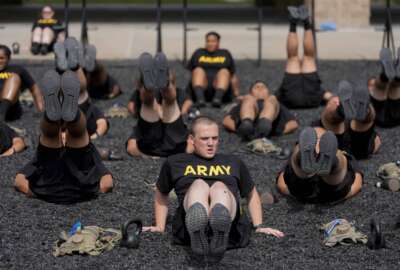Army expands its officer rebranching program
The Army’s Officer Rebranching program allows lieutenants to voluntarily transfer into the service's undermanned fields, including finance and signal corps.
The U.S. Army is offering its lieutenants an opportunity to voluntarily transfer into the service’s understrength career fields, including adjutant general, air defense, finance, logistics and signal corps.
Building on last year’s pilot program, which targeted lieutenants from the Infantry and Armor branches, this year, the Army’s Officer Rebranching program expands eligibility to lieutenants from the Field Artillery and Engineer branches as well.
The Army Human Resources Command seeks around 300 people to voluntarily transfer into undermanned fields — approximately 130 lieutenants from year group 2021 voluntarily moved into the adjutant general, finance and signal corps last year.
“By offering more options this year, we hope to get greater participation and have a greater impact on readiness,” said Maj. Thomas F. Mussmann, a readiness analyst at the Army Human Resources Command.
Program participation is entirely voluntary. Last year, 57% of officers participating in the pilot program were transferred to their first-choice branch, and 43% were moved to their second-choice branch.
In addition to offering transfers to the adjutant general, air defense, finance, logistics, and signal corps branches, the program will also allow lieutenants from year group 2022 to move into functional areas such as information technology engineering, space operations, public affairs and simulations operations.
Each branch, however, has a cap on how many officers can transfer out of or transfer into any given career field as part of the Officer Rebranching program.
Eligible officers can submit their preferences through the Army’s Integrated Personnel and Pay System – Army (IPPS-A) portal between January 7 and February 17, 2025 — officers must rank their desired branches over their current branch if they wish to transfer, according to the release.
Officers participating in the program can update their branch preferences as many times as they wish during the application period, although they can’t change it after the deadline.
The Army Human Resources Command plans to finalize the results in March 2025 — officers approved for transfer will immediately join their new branch or functional area without having to relocate to a new duty station.
“The ideal candidate for this program is someone who enjoys the Army but is looking for a change from their current career field,” said Maj. Jesse Lansford, the Human Resources Command senior marketplace analyst.
“Maybe they’re looking for company command time but in a branch with a long wait queue, or they didn’t get their initial branch of choice upon commissioning. This is a retention tool for those who want to stay and serve rather than to separate and seek opportunities elsewhere.”
Col. Shay O’Neal, the Human Resources Command readiness division’s director, said the program plays an important role in addressing personnel imbalances within the service and ensuring the Army’s long-term readiness.
“The Army will eventually face shortages at the battalion, brigade, division, and corps level if we don’t shape the force now,” said O’Neal.
The Army’s Voluntary Transfer Incentive Program, which is another tool for the service aimed at rebalancing the force, allows mid-career Army officers at overstaffed branches to volunteer to move to an underserved branch. Applications are reviewed by a VTIP panel — panels are held twice a year.
Copyright © 2025 Federal News Network. All rights reserved. This website is not intended for users located within the European Economic Area.






